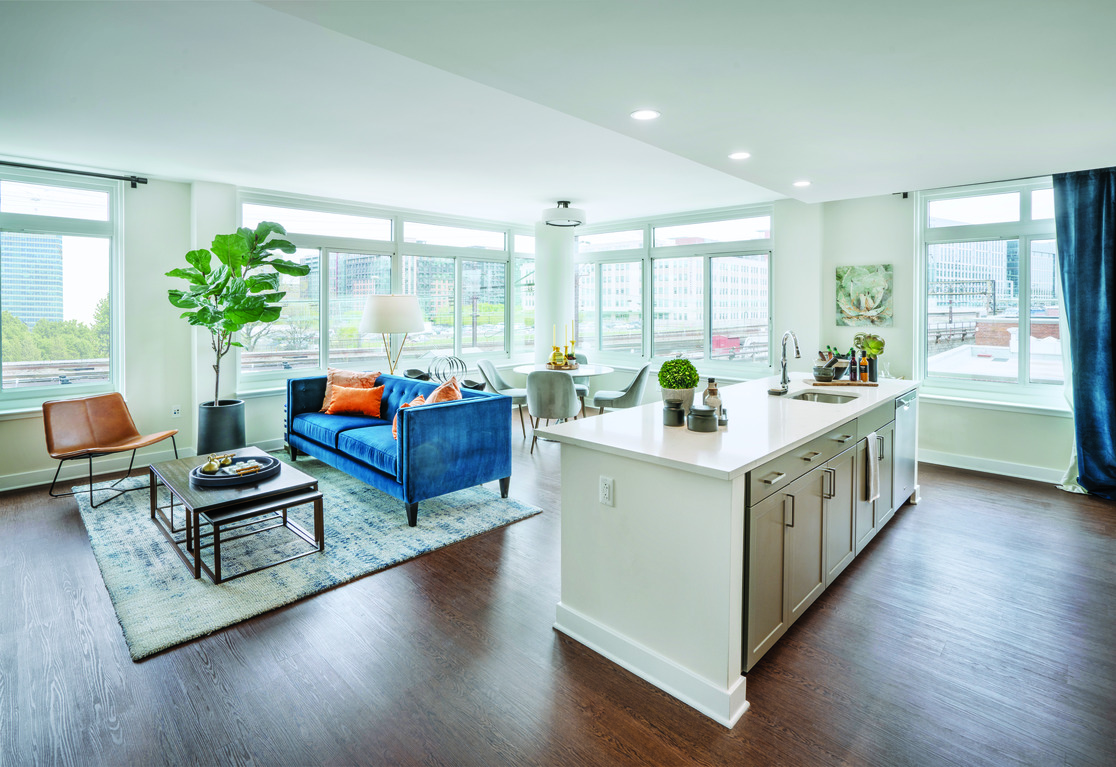5 Things to Consider When Designing a Rental Apartment
Designing a rental apartment requires a careful balance between functionality, durability, and universal appeal. Whether you’re a landlord furnishing a property for tenants or a tenant decorating a rental space for yourself, making the right design decisions is crucial.
Unlike designing a permanent residence, rentals demand smart investments—choices that look good, endure everyday use, and attract the right tenants without over-personalization.
In this article, we’ll explore the 5 key things to consider when designing a rental apartment, with practical tips and ideas to get it right the first time.
1. Durability is Key: Invest in Hardwearing Materials
Rental apartments experience more wear and tear compared to owned homes. Different tenants over time mean different levels of usage and maintenance habits.
What to Focus On:
- Flooring: Use durable options like vitrified tiles, ceramic tiles, or engineered wood. Avoid softwood floors that scratch easily.
- Cabinets and Storage: Use BWP (Boiling Waterproof) plywood with durable laminates for kitchens and wardrobes.
- Walls: Choose washable, stain-resistant paints like semi-gloss or satin finishes.
Why It Matters:
Durable finishes require fewer repairs, withstand frequent use, and keep the apartment looking fresh for longer, helping you save on maintenance costs and avoid frequent touch-ups.
Pro Tip: Stick to mid-range but robust materials that are easy to replace or repair if needed.
2. Neutral, Timeless Aesthetics: Appeal to a Wider Audience
When designing a rental, it’s important to keep the interiors neutral and adaptable. You’re designing for many future tenants, not just one.
What to Focus On:
- Color Palette: Choose whites, beiges, light greys, and soft pastels. Neutral walls act as a blank canvas, allowing tenants to personalize without clashing.
- Furniture (if furnished): Stick to simple, modern pieces with clean lines. Avoid anything too funky, traditional, or theme-heavy.
- Fixtures: Choose classic hardware finishes like matte black, brushed nickel, or chrome for door handles, faucets, and cabinet pulls.
Why It Matters:
A neutral, modern design appeals to a broader pool of renters and makes it easier to lease the apartment quickly. Plus, it keeps the space looking bigger and brighter.
Pro Tip: Add character through easily changeable items like cushions, rugs, or art prints—keeping the basics classic.
3. Maximize Storage Without Compromising Space
Storage is one of the top priorities for tenants. A rental apartment that offers ample, smart storage options automatically stands out from the competition.
What to Focus On:
- Modular Wardrobes: Install floor-to-ceiling wardrobes if possible. Provide hanging space, drawers, and shelves inside.
- Kitchen Storage: Use modular kitchen units with maximum drawers, pull-outs, and tall storage cabinets.
- Hidden Storage: If furnished, consider beds with hydraulic storage, ottomans, or coffee tables with hidden compartments.
Why It Matters:
Tenants value an organized space where they can fit their belongings without clutter. Good storage improves the functionality of the apartment and makes the living experience smoother.
Pro Tip: Smart storage also helps keep the interiors neat, minimizing visual mess and reducing damage from overcrowding.
4. Easy Maintenance and Cleaning: A Win-Win for Everyone
Tenants prefer apartments that are easy to maintain, and so do landlords. Low-maintenance interiors mean fewer complaints, faster turnovers, and higher tenant satisfaction.
What to Focus On:
- Flooring: Choose scratch-resistant, stain-resistant surfaces.
- Countertops: Quartz or granite countertops are more durable and easier to clean compared to softer stones like marble.
- Paints and Wall Finishes: Use washable paints that can withstand cleaning without fading.
- Bathroom Fittings: Install anti-rust fixtures and use anti-skid tiles in bathrooms.
Why It Matters:
Apartments that are easier to clean stay in better condition for longer, saving both tenants and landlords effort and costs in the long run.
Pro Tip: Avoid highly textured surfaces in kitchens and bathrooms, as they trap dirt and grime.
5. Flexibility and Adaptability: Think Long-Term
Every tenant has different needs—one may want a home office, another may need a nursery. Designing with flexibility in mind ensures that your rental can meet different lifestyles with minimal adjustments.
What to Focus On:
- Open Layouts: Keep spaces open and versatile. A second bedroom can be an office, a hobby room, or a guest room based on the tenant’s needs.
- Simple Fixtures: Avoid heavy built-ins that limit how tenants can use the space.
- Universal Designs: Think accessibility. Wider doorways, easy-to-reach shelves, and step-free entries help cater to a wider audience.
Why It Matters:
An adaptable apartment can serve a wider market—young couples, families, work-from-home professionals, or retirees—which means higher occupancy rates and better returns on investment.
Pro Tip: Offering semi-furnished options (like modular wardrobes and a basic kitchen) instead of fully furnished gives tenants flexibility to add their own touch.
Final Thoughts
Designing a rental apartment is about balancing aesthetics, durability, and functionality.
While you want the space to look appealing, it should also withstand daily use and stay relevant for years. By focusing on durable materials, neutral designs, smart storage, low maintenance, and flexibility, you can create a rental that tenants love—and one that yields better returns for you over time.
Whether you’re setting up a studio apartment, a cozy 1 BHK, or a spacious 2 BHK, keeping these five essentials in mind will help you design a rental apartment that is stylish, practical, and profitable.

Harish Yadav is the founder of Interio Group App. It is an Home-Interiors Marketplace where customers can hire Interior businesses and designers directly. Customers can get quotes for their interior needs.
